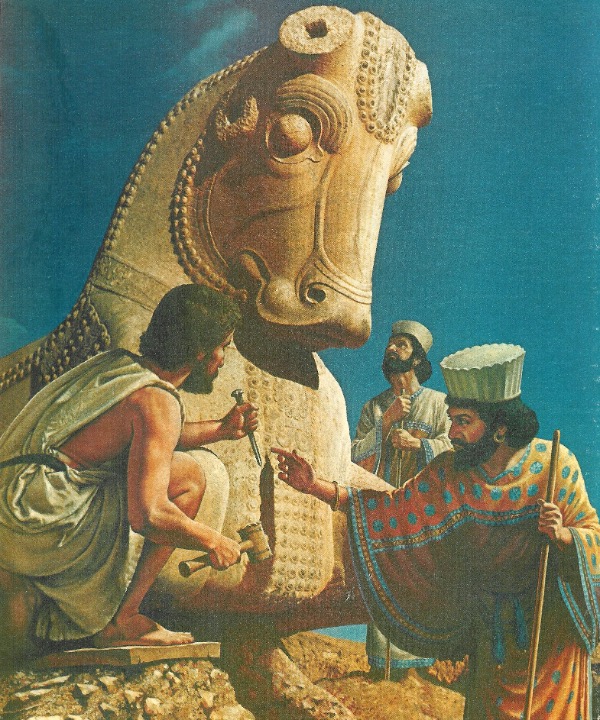The article “Persepolis Architects Were Geologists, too” was originally published in Mehr News on December 23, 2005 and by Shapur Suren-Pahlav in the CAIS venue on December 23, 2005.
=======================================================================================
Recent geological studies at the Persepolis historical site indicate that Achaemenid dynastic era architects used their unique knowledge of geology and mines in the construction of Persepolis, as reported by the Persian service of CHN. The experts were well aware of the science of geology and were keen to discover underground sources of water, geologist Azam Zare said.

A Possible Qanat (or aqueduct water system) under Persepolis (Source: Sina Press).
The studies show that the Achaemenid experts had acquired specialized knowledge and technology, but it is unclear how they mastered these skills, she added. The studies of the geological team at Persepolis led to the discovery of stone mines at mounts Rahmat and Majdabad and the Sivand Mine. As noted by Zare:
“Majdabad is far from Persepolis, but the Achaemenid experts used to travel all that distance to acquire the stones they needed. Several experiments carried out on the stones of the three regions by archaeologists show that the stones at Majdabad and Rahmat were of a better quality and were stronger compared with those of Sivand …”
Persepolis is located near Marvdasht in a region with large underground water reservoirs, and that is why the Achaemenids faced no problems in building palaces and gardens, she explained. Studies on the wells around Persepolis are continuing, and geologists seek to determine the connections between the wells in the region, she said, adding that some of the wells are still in use but others have run dry over the years.
 Achaemenid Engineers and (Greek or Lydian) craftsmen at Persepolis 500s BCE (Source: Wisgoon).
Achaemenid Engineers and (Greek or Lydian) craftsmen at Persepolis 500s BCE (Source: Wisgoon).
Unfortunately, the construction techniques used by the Achaemenids were forgotten after Alexander’s invasion of Iran, she said in conclusion.




